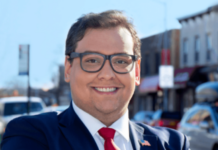As we begin the long, painful process of post election analysis, progressives should reflect on the lessons learned during the Occupy Wall Street movement.
When the movement first arose in the fall of 2011, it was in reaction to the sharp austerity actions being seen and felt around the world. It had become increasing clear that wealth was being funneled to the already rich and powerful. Wall Street bankers, money managers and speculators were getting richer, while those who did the real work of the country were seeing less value for every dollar earned.
Young people were beginning to push back against the huge debts that they were incurring as they tried to get a college education. They saw the federal government making tens of billions of dollars off of those loans, while Wall Street banks and corporations were given federal handouts.
The Occupy Wall Street movement was brief, but it was enormously powerful. The language of the recent election reflected that power. More than one candidate spoke about the 99 percent, the one percent, income inequality and the need to regulate the big banks.
It was the activism and energy of the Occupy movement that brought the topic of income inequality to the attention of the country.
RawStory reports on the ways in which the Occupy Wall Street organizers managed to form a new kind of democracy that was open, direct and inclusive.
It had become clear to the founders of the Occupation that our existing institutions ignored their wishes and worked to silence their voices. So they created new institutions, including what they called General Assemblies, where every voice was welcome.
They voted on every key decision, at first requiring unanimous decision making, shifting to a 90 percent threshold to pass any measure when the groups grew larger. Occupiers also created and implemented “Spokes Councils.” The idea was that members from various “spokes” or areas of the camp (kitchen, medical, media, etc) came together in a central hub to present concerns and ideas to the general group.
The Movement was determined to create a kind of horizontal democracy, with no hierarchy of power. It was committed to full transparency and complete inclusivity. It was formed to allow American citizens to directly impact financial and social policy, rather than going through the massive representational bureaucracy of the federal government to “seek a redress of grievances.”
The political scientists who wrote the article focused on the use of what they call “anarchist constitutionalising,” where all voices are equally valued. They wrote that it is the absence of social and political domination that made the camps work.
They wrote:
“The unique feature of anarchist constitutionalising, and what we find in Occupy, is the degree to which they were participatory and voluntary, rather than imposed from above.”
As we catch our collective breath and recover from our shock, it is vital for progressives to unify. We must find a way to fight social and economic inequality in a way that is efficient and powerful.
If we look at the fact that five years after Occupy Wall Street we are still using phrases like “the 99 percent,” we can see that there are lessons to be learned from the movement.
Perhaps that really is what democracy looks like.
Featured image by DonkeyHotey via Flickr. Available through CC BY 2.0 license.




